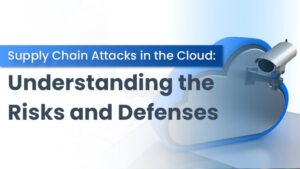Introduction
Adopting the cloud is a crucial and common step in digital transformation. However, if not done correctly, numerous possible problems may arise. This article will discuss cloud computing and the Pitfalls of Cloud Adoption.
IPSpecialist is an excellent place to start your Cloud Computing career. IPSpecialist is an e-learning platform that provides career advice to assist you in moving forward in your career. Take a look at our Cloud Computing Courses now!
What Is Cloud Computing
The distribution of diverse hardware and software services through the internet via remote servers is known as cloud computing. These remote servers are busy storing, maintaining, and processing data that allows users to scale up or down their existing infrastructure.
Cloud Computing is the process of storing data and accessing computers over the internet. It delivers different computing services such as servers, software, analytics, databases, and storage via the internet. Computing resources are delivered on-demand through a cloud service platform with pay-as-you-go pricing. The companies or “Cloud Providers” that provide these services are Amazon, Google, and Azure.

The cloud is an essential topic for everyone, from small businesses to multinational corporations, but it is still a broad phrase covering many internet grounds. It is more critical than ever to understand the differences and benefits of the various cloud services when you explore moving your organization to the cloud, whether for application or infrastructure deployment.
Even though the number of as-a-service options is expanding by the day, there are usually three cloud service models to compare:
-
Software as a Service (SaaS)
One or more suppliers own, deliver, and manage software remotely. To begin, Software-as-a-Service, or SaaS, is a widely used method of obtaining and paying for software. Instead of installing software on your servers, you can use a third-party service.
-
Infrastructure as a Service (IaaS)
Providers own and host compute resources along with storage and networking capabilities, which are made accessible to consumers on demand.
-
Platform as a Service (PaaS)
Application infrastructure services are a diverse group of services. Application platform, integration, business process management, and database services are just a few of the services available.

What Are Some Pitfalls to Avoid on Your Path to Cloud Adoption
Businesses may feel like they are not getting what they want out of their cloud adoption journey. This is due to a lack of clarity in defining what digital transformation meant for their firm or the exact results they desired. These are not always technology-related results, but they could include increased speed to market, agility, and employee engagement. Regardless of the desired outcome, it is critical to define these goals from the start because they will affect your workload plan.
Some businesses neglect details like the environment setup, architecture framework, and landing zone after identifying their goals and developing a strategy and plan. If done correctly, moving to the cloud can save money. On the other hand, companies make assumptions disregard these intricacies, which can be costly.
-
Not Maintaining the Same Quality
Adoption of the cloud necessitates changes but does not skimp on quality. Have a plan to ensure that the quality of your application or service is maintained, whether you are adjusting old services or developing new ones.
-
Not Incorporating Governance Early
Everything is supported by governance. Controls, compliance, and security are all required in a cloud environment. Even if you use SaaS, where customers are not responsible for hardware or software updates, it does not mean you are giving the cloud provider complete control over your data.
Cloud Challenges
According to 77% of respondents in the cited survey, cloud computing security issues had become the top concern in 2018. The most commonly mentioned cloud challenge was a lack of resources/expertise for a long time. Security, on the other hand, improved in 2018.
-
Cost Management and Containment
In most circumstances, cloud computing can help businesses save money. Without spending much on new gear, the corporation may grow its processing capability in the cloud. Businesses might instead employ public cloud providers’ pay-as-you-go plans to gain extra processing.
-
Lack of Resources/Expertise
One of the current cloud difficulties businesses and enterprises face is a lack of resources and knowledge. While cloud technologies continue to advance rapidly, organizations are increasingly putting more workloads in the cloud. The demand for expertise continues to rise. Additional IT and development staff training can help mitigate these issues.
Cloud computing faces several issues, and governance/control is number four on the list. Proper IT governance should guarantee that IT assets are implemented and used according to agreed-upon policies and processes; ensure that they are appropriately regulated and maintained, and support your organization’s strategy and business goals.
Compliance is one of the risks that cloud computing faces today, and this is a problem for anyone who uses cloud storage or backup services. Every time a business moves data from internal storage to the cloud, it must comply with industry standards and legislation.
Cloud computing’s problems have not all condensed into a single cloud.
In the last few years, the status of multi-cloud has exploded. Companies migrate to or merge public and private clouds, with internet giants like Alibaba and Amazon leading the trend.
When a company migrates to the cloud, it becomes more reliant on service providers. Nonetheless, this cooperation frequently gives firms cutting-edge technology to which they would not otherwise have access. The performance of the organization’s BI and other cloud-based systems, on the other hand, is related to the cloud provider’s performance when it falters. When your service provider goes down, you go down with them.
Although establishing a private cloud is not a top priority for many businesses, for those that are planning to do so, it soon becomes one of the most significant difficulties in cloud computing – private cloud solutions should be carefully considered.
One of the significant challenges in the cloud computing industry in recent years has been migration. This is the procedure for transferring an application to the cloud. Although migrating a new application to the cloud is a simple procedure, there are numerous cloud hurdles to overcome when moving an existing application to the cloud.

Conclusion
Take a strategic and adaptive approach to implementation, explore the cloud solutions, and integrate business and IT teams to get the most out of it and solve difficulties. All of these will ensure that the advantages of cloud business intelligence outnumber the disadvantages.










